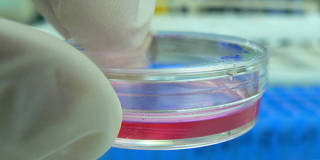The International Stem Cell Corporation (ISCC) is seeking patents in Europe for a technology that produces stem cell lines from the parthenogenetic activation of an unfertilized ovum. The time has come to address whether such patents controvert “ordre public,” or morality – and only the public can decide that.
HAARLEM – In 1899, the German-American scientist Jacques Loeb engineered the asexual reproduction of sea urchins through artificial parthenogenesis (the manipulation of egg cells to enable embryonic development without fertilization). His speculation about complete parthenogenesis in mammals – not to mention his use of the term “immaculate conception” to describe the process – prompted public concern about whether scientists should be “playing God.”
With the International Stem Cell Corporation (ISCC) seeking patents in Europe for a technology that produces stem cell lines from the parthenogenetic activation of an unfertilized ovum, the time has come to answer that question. The question is how.
Problems with the patenting of parthenogenetically activated cells are nothing new. Such cells resemble human embryos, which, under European Union patent law, cannot be patented. Following a ruling by the European Court of Justice (ECJ) in 2011 that those cells constitute human embryos, patent applications for parthenogenetic cells in the United Kingdom and other countries have been delayed and even rejected. (The ISCC does hold patents for its stem cells in the United States.)

HAARLEM – In 1899, the German-American scientist Jacques Loeb engineered the asexual reproduction of sea urchins through artificial parthenogenesis (the manipulation of egg cells to enable embryonic development without fertilization). His speculation about complete parthenogenesis in mammals – not to mention his use of the term “immaculate conception” to describe the process – prompted public concern about whether scientists should be “playing God.”
With the International Stem Cell Corporation (ISCC) seeking patents in Europe for a technology that produces stem cell lines from the parthenogenetic activation of an unfertilized ovum, the time has come to answer that question. The question is how.
Problems with the patenting of parthenogenetically activated cells are nothing new. Such cells resemble human embryos, which, under European Union patent law, cannot be patented. Following a ruling by the European Court of Justice (ECJ) in 2011 that those cells constitute human embryos, patent applications for parthenogenetic cells in the United Kingdom and other countries have been delayed and even rejected. (The ISCC does hold patents for its stem cells in the United States.)